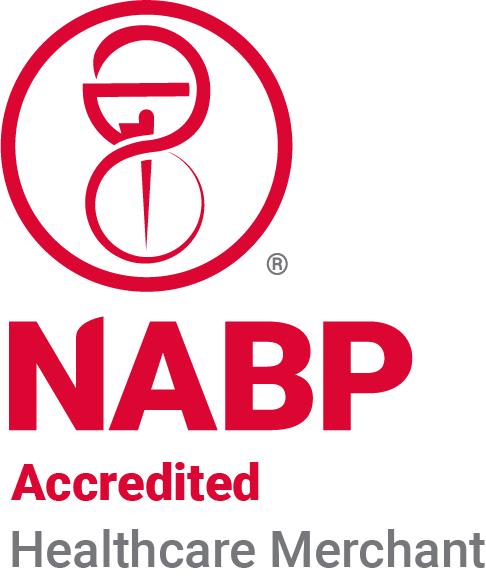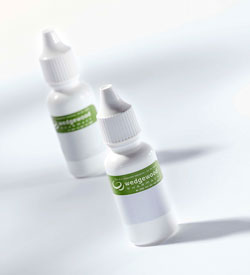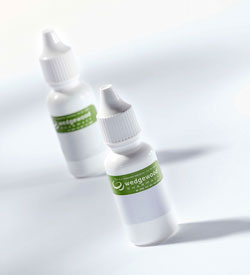Free Delivery on $50+*
Providing Quality & Trust
Cyclosporine Ophthalmic Solution in Corn oil
Wedgewood Pharmacy
$75.50 - $113.00
$75.50 Each
Detailed Description
CYCLOSPORINE: OPHTHALMIC SOLUTION
(sye-klo-spore-in)
Cyclosporine, also called cyclosporin A (CsA), was the first discovered and is the only commercially available drug in the cyclosporin category of immunosuppressive drugs.
Cyclosporine is non-cytotoxic. It inhibits T-helper cell activity and shifts the regulation of the immune response towards immune tolerance. Since T-cells orchestrate most chronic immune responses, cyclosporine has broad anti-inflammatory effects. Its original indication was to prevent rejection in organ transplantation patients; its systemic indications currently include many autoimmune disorders.
The first commercial ophthalmic cyclosporine was Optimmune®, a 0.2% cyclosporine ointment made by Schering Plough Animal Health. Optimmune® was approved in 1995 in the Unites States to treat canine KCS and approved in Europe for KCS and pannus. Compounded ophthalmic cyclosporine drops have been used commonly in 1.0-2.0% concentrations in corn oil when Optimmune® was either commercially unavailable or owners were physically unable to apply an ointment. An aqueous suspension of 0.05% cyclosporine (Restasis®) was developed by Allergan Pharmaceuticals for treatment of KCS in human patients.
Cyclosporine may be prescribed for:
- Keratoconjunctivitis Sicca
- KCS
Prescribed For:
- Dogs
- Cats
- (For the eye)
6 strengths of Cyclosporine Ophthalmic Solution are available, ranging from 0.1 % to 2 %.
HAZARDOUS - HANDLE AND DISPOSE OF PROPERLY
You and your veterinarian will discuss why this drug is the most appropriate choice.
How is this medication useful?
The FDA (U.S. Food & Drug Administration) has approved this drug for use in both humans and animals.
Cyclosporine is approved to treat:
- dry eye (keratoconjunctivitis sicca)
- CSK (chronic superficial keratitis) in dogs
- It is also useful in treating immune-mediated keratitis and pannus in horses and dogs
How should this medication be given?
- For this medication to work, give it exactly as your veterinarian has prescribed. Always check the prescription label to be sure you are giving the drug correctly. Wash your hands before administering this medication.
- Administer this drug to your animal’s eye in the exact amountthat your veterinarian has prescribed. Do nottouch the dropper tip or allow itto touch your animal’s eye or any other surface to prevent contamination.
- If any residue is left on your animal’s face after giving the eye drops, gently wipe it off with a damp cloth or tissue.
Storage/Stability:
Cyclosporine solutions should not be refrigerated or frozen.
PROTECT FROM LIGHT AND STORE AT ROOM TEMPERATURE
Long-term stability of a 1% solution in corn oil has been established by USP to be 180 days; sterility storage times should be according to USP <797> defaults or per results of individual extended sterility testing.
Lacrimogenic Effects:
Topical cyclosporine has several beneficial effects in dry-eye patients. One of these effects is to directly increase secretion of physiologic tears. Physiologic tears (as opposed to artificial tears) contain growth factors to regulate corneal cell turnover and healing, lysozyme and antibodies for infection control and numerous nutritional elements required for the health of the avascular cornea. Topical CsA appears to facilitate lymphocytic apoptosis and suppress epithelial cell apoptosis, allowing regeneration of lacrimal-gland tissue in dogs with KCS. Cyclosporine also restores conjunctival goblet-cell mucin production. Topical CsA is an effective therapy for aqueous deficiency and for mucin deficiency dry-eye disorders in dogs.
Approximately 80% of dogs with KCS will increase tearing when treated with topical CsA. A major determinant in the success or failure of the individual KCS patient appears to be the stage of KCS at which CsA treatment is initiated. The lacrimal glands in KCS become progressively atrophied over the course of the disease. Dogs with a Schirmer Tear Test (STT) of 0 mm/min often have complete atrophy of the lacrimal glands and cannot respond to CsA; early treatment of KCS is therefore advocated. Dogs with congenital aplasia of the lacrimal glands and dogs with neurologic etiologies of KCS also are unlikely to increase tearing with CsA. However, even in dogs where lacrimation cannot be restored with CsA, the anti-inflammatory effects on the cornea and conjunctiva and regulating mucus production can be beneficial. The majority of KCS dogs require lifelong CsA-treatment. Interruptions in therapy lead to relapse of KCS.
Ocular-Surface Inflammatory Disorders:
Topical CsA represents an important therapeutic addition for several autoimmune- and immune-mediated disorders of the ocular surface that previously were responsive only to corticosteroids. Dogs that receive chronic topical corticosteroids are in jeopardy of incurring a minor corneal abrasion, which, under the influence of corticosteroids and collagenase activation, may progress to a melting stromal ulcer. Cyclosporine does not activate collagenase, hence it is much safer for chronic use than corticosteroids, particularly in exophthalmic breeds susceptible to ocular injury.
Cyclosporine does not penetrate well into the inner eye and it is therefore seldom used to treat anterior uveitis. It reaches high concentrations in the cornea, conjunctiva, sclera, and lids, where it is useful for suppressing chronic immune-mediated disease. In treating chronic superficial keratitis (pannus), nictitans plasmacytic conjunctivitis and pigmentary keratitis, topical cyclosporine is effective whether used with topical corticosteroids or in place of corticosteroids. Anecdotal evidence suggests it also is useful to treat nodular scleritis, diffuse scleritis, follicular conjunctivitis and atopic blepharoconjunctivitis.
Adverse Effects and Precautions:
- Suppression of systemic lymphoblastogenesis has been reported in small dogs treated with 2% topical cyclosporine, but not with 0.2% (Optimmune®), suggesting that lower concentrations are advisable, particularly in small animals.
- Ocular irritation reactions, including conjunctival hyperemia, periocular alopecia, and blepharitis are common when topical
- Cyclosporine is made from oral cyclosporine (Sandimmune®) but rarely are seen with Optimmune. Ingredients in the oral solution such as alcohol and surfactants as well as higher concentrations of CsA contribute to the irritation response. Cats have a lower tolerance to this ocular irritation than do dogs.
- Experimentally, CsA-induced exacerbations of ocular herpes in cats occurred when used without concurrent virostatic agents.
- Unlike corticosteroids, cyclosporine does not induce collagenase and is therefore not contraindicated in the presence of corneal ulcers.
- Epiphora is an anticipated side-effect of CsA in non dry-eye patients.
- The bioavailability of CsA is affected by the oil in which it is dissolved. Corn oil and castor oil are desirable vehicles; mineral oil is particularly undesirable. Cyclosporine is an extremely stable molecule, however stability of the ophthalmic preparation is limited by solubility, oxidation of the vehicle and sterility.
Recommended frequency is usually twice daily and can be adjusted more or less frequently to effect. For KCS, ophthalmic cyclosporine usually needs to be continued lifelong. For transient ocular surface disorders it may be used periodically as needed.
Instructional Video

Powered by nopCommerce
This site is running in live payment mode. Real payments will be processed.

